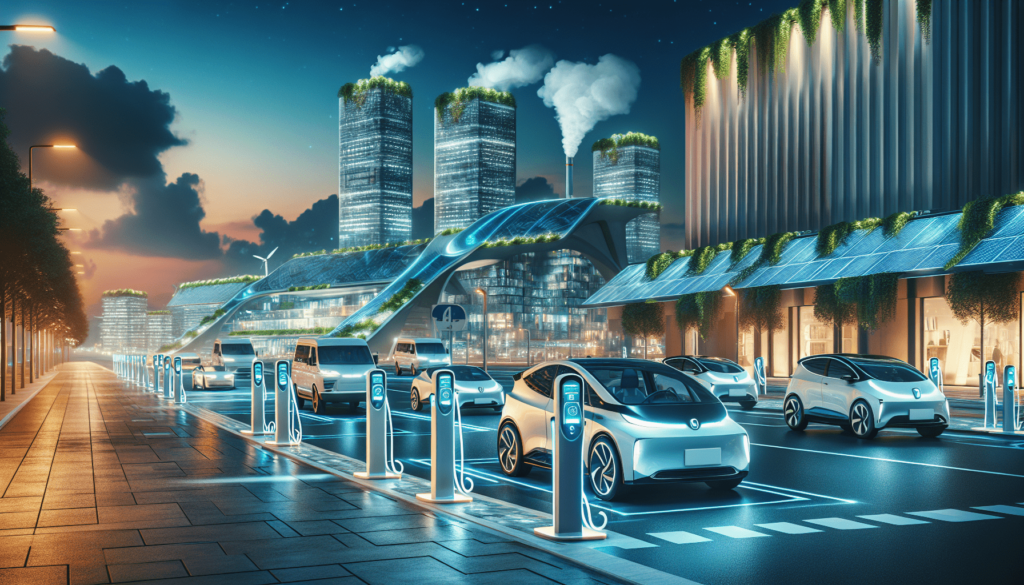Exploring the Range of Electric Vehicles
Share

When it comes to electric vehicles (EVs), the range is a hot topic of discussion. We’ve all heard the questions – “How far can an EV really go?” or “Will it leave me stranded on the side of the road?” Well, fear not, because in this article, we’re going to explore the range of electric vehicles and help you better understand just how far these eco-friendly cars can take you. From city commutes to cross-country road trips, buckle up and get ready to experience the exciting world of EVs.
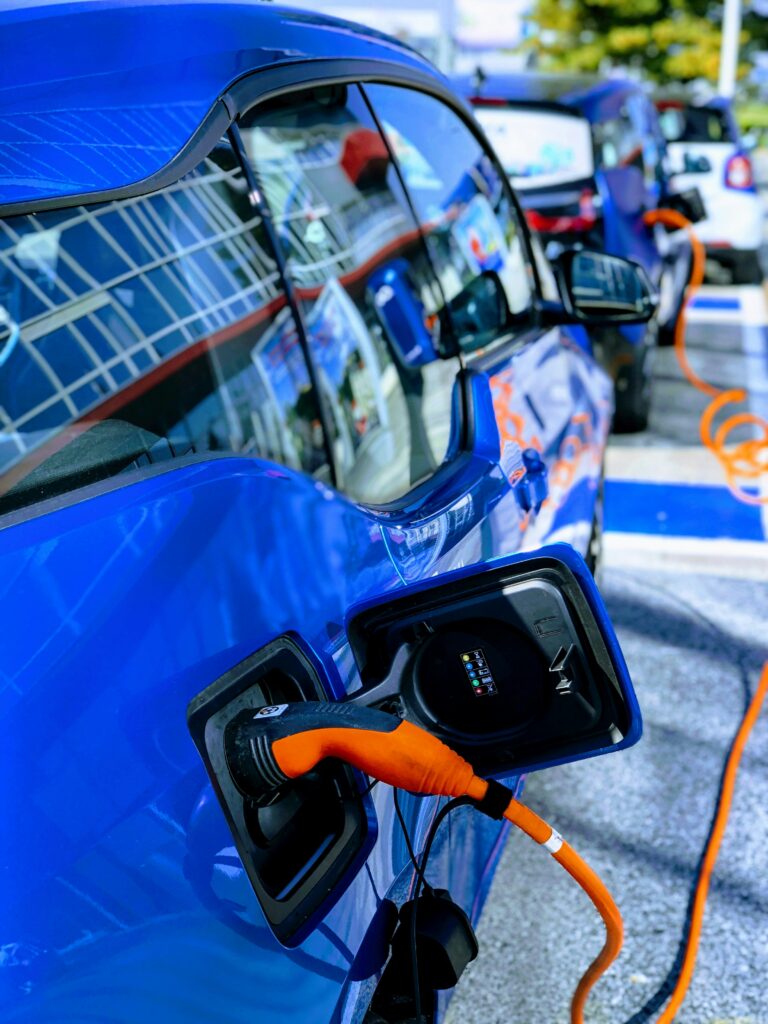
Understanding Electric Vehicles
Electric vehicles (EVs) are a type of vehicle that operates using one or more electric motors instead of an internal combustion engine. These vehicles run on electricity stored in batteries, which are charged by plugging them into an external power source. By eliminating the need for gasoline or diesel fuel, EVs offer a more sustainable and environmentally friendly alternative to traditional vehicles.
Definition of an Electric Vehicle
An electric vehicle, or EV, is any vehicle that is powered by electricity. It can be categorized into two main types: Battery Electric Vehicles (BEVs) and Plug-in Hybrid Electric Vehicles (PHEVs). BEVs function solely on electric power, drawing energy from a battery pack, while PHEVs combine an electric motor with an internal combustion engine.
Types of Electric Vehicles
Battery Electric Vehicles (BEVs) are fully electric vehicles that rely solely on the energy stored in their batteries to operate. They don’t have an internal combustion engine and produce zero tailpipe emissions. On the other hand, Plug-in Hybrid Electric Vehicles (PHEVs) have a combination of an electric motor and an internal combustion engine. PHEVs can run on electric power alone for a certain distance before the internal combustion engine kicks in.
Advantages of Electric Vehicles
One of the most significant advantages of electric vehicles is their lower environmental impact compared to traditional vehicles. EVs produce zero tailpipe emissions, which helps reduce air pollution and greenhouse gas emissions. Additionally, EVs have fewer moving parts and require less maintenance. They also offer a smoother and quieter ride due to the absence of an internal combustion engine.
Disadvantages of Electric Vehicles
Despite their numerous advantages, electric vehicles do have a few disadvantages. One of the main challenges is the limited range of EVs compared to traditional vehicles. EVs typically have a shorter driving range before requiring a recharge, making them less suitable for long-distance travel. Additionally, the initial cost of purchasing an electric vehicle can be higher, although this is gradually decreasing as technology improves. Furthermore, the availability of charging infrastructure is still limited in some areas.
Range of Electric Vehicles
Definition of Range in EVs
The range of an electric vehicle refers to the distance it can travel on a single charge before needing to be recharged. It is influenced by several factors, including the vehicle’s battery capacity and efficiency, as well as driving conditions, such as speed and terrain.
Factors Affecting Range
Several factors can affect the range of an electric vehicle. Battery capacity plays a crucial role, as a larger battery pack can store more energy and provide a longer driving range. Efficiency also influences range, with more energy-efficient EVs being able to cover more distance on the same amount of charge. Other factors include driving habits, external temperatures, terrain, and the use of accessories such as air conditioning.
Typical Range for Battery Electric Vehicles
The typical range for battery electric vehicles varies depending on the model and the battery capacity. Entry-level compact electric cars may have a range of around 100-150 miles, while mainstream electric vehicles can achieve a range of 200-300 miles on a full charge. High-end electric vehicles, such as luxury sedans or SUVs, may offer ranges exceeding 300 miles.
Typical Range for Plug-in Hybrid Electric Vehicles
Plug-in hybrid electric vehicles have a smaller electric-only range compared to full battery electric vehicles. On a full charge, PHEVs typically offer an electric range of around 20-50 miles before the internal combustion engine takes over. The combined range of a PHEV, taking into account both electric and gasoline power, can vary widely depending on the model.
Increasing Range with Advancements in Battery Technology
Advancements in battery technology are continuously improving the range of electric vehicles. Lithium-ion batteries, currently the most common type used in EVs, are becoming more energy-dense, allowing for increased capacity within the same physical size. This leads to a longer driving range. Additionally, research is being conducted in areas such as solid-state batteries, which have the potential to significantly increase range and shorten charging times.
Charging Infrastructure
Importance of Charging Infrastructure
A reliable and extensive charging infrastructure is crucial for the widespread adoption of electric vehicles. Access to charging stations allows EV owners to recharge their vehicles conveniently, whether at home, work, or on the road. Without a robust charging infrastructure, range anxiety, the fear of running out of power, can deter potential buyers from opting for an electric vehicle.
Types of Charging Stations
Charging stations for electric vehicles come in various types, offering different levels of charging speed. Level 1 chargers, also known as trickle chargers, are typically used in residential settings and provide the slowest charging rate. Level 2 chargers offer faster charging speeds and are commonly found in public spaces, workplaces, and homes. Level 3 chargers, also known as DC fast chargers, provide the fastest charging speeds and are primarily used for long-distance travel and commercial charging needs.
Public Charging Network
Public charging stations are crucial for EV owners who do not have access to private chargers. These stations are strategically located along highways, in shopping centers, and other public areas. Public charging networks, operated by various companies and organizations, provide a network of charging stations that EV owners can access. These networks often require a membership or payment, but some public charging stations may be free to use.
Home Charging Options
Home charging is one of the most convenient and accessible ways to charge an electric vehicle. The two main home charging options are Level 1 and Level 2 chargers. Level 1 chargers can be plugged into a standard household outlet, allowing for a slow and steady recharge. Level 2 chargers require a dedicated charging unit to be installed at home and provide faster charging speeds. Home charging stations offer the flexibility of charging overnight and waking up to a fully charged vehicle each day.
Charging Time and Range Anxiety
Charging time is a significant concern for electric vehicle owners, especially when it comes to long trips. While Level 1 chargers provide the slowest charging speeds, Level 2 chargers offer a faster recharge. DC fast chargers, commonly found along highways, can provide a significant charge in a short amount of time. Despite advancements in charging technology, the time it takes to charge an EV is still longer compared to refueling a traditional vehicle. This can contribute to range anxiety, the fear of not finding a charging station during longer drives.
Improving Range Efficiency
Regenerative Braking Systems
Regenerative braking is a technology that allows electric vehicles to recover and store energy that is typically lost during braking. Instead of relying solely on traditional friction brakes, regenerative braking systems use the electric motor to convert the kinetic energy of the vehicle into electrical energy, which can be stored in the battery. This technology helps extend the range of electric vehicles by increasing their overall efficiency.
Energy Recapture Technologies
In addition to regenerative braking, there are other energy recapture technologies being developed to improve the range efficiency of electric vehicles. These technologies include systems that capture energy from various sources, such as shock absorbers, vibrations from the road, or even heat dissipation. By converting these energy sources into electrical energy, the overall range of electric vehicles can be enhanced.
Aerodynamics and Weight Reduction
Aerodynamics play a critical role in the range efficiency of electric vehicles. Streamlined design features, such as a sleek body shape, smooth undercarriage, and reduced drag coefficient, can contribute to maximizing range. Similarly, weight reduction is essential for improving efficiency. Lighter materials, such as carbon fiber or aluminum alloys, can be used to construct EVs, reducing energy consumption and increasing range.
Efficient Powertrain Design
Efficient powertrain design involves optimizing the interaction between the electric motor, battery, and other components of the vehicle. By improving the overall efficiency of these systems, electric vehicles can achieve a better range. Factors such as motor efficiency, battery management systems, and advanced power electronics play crucial roles in enhancing range efficiency.
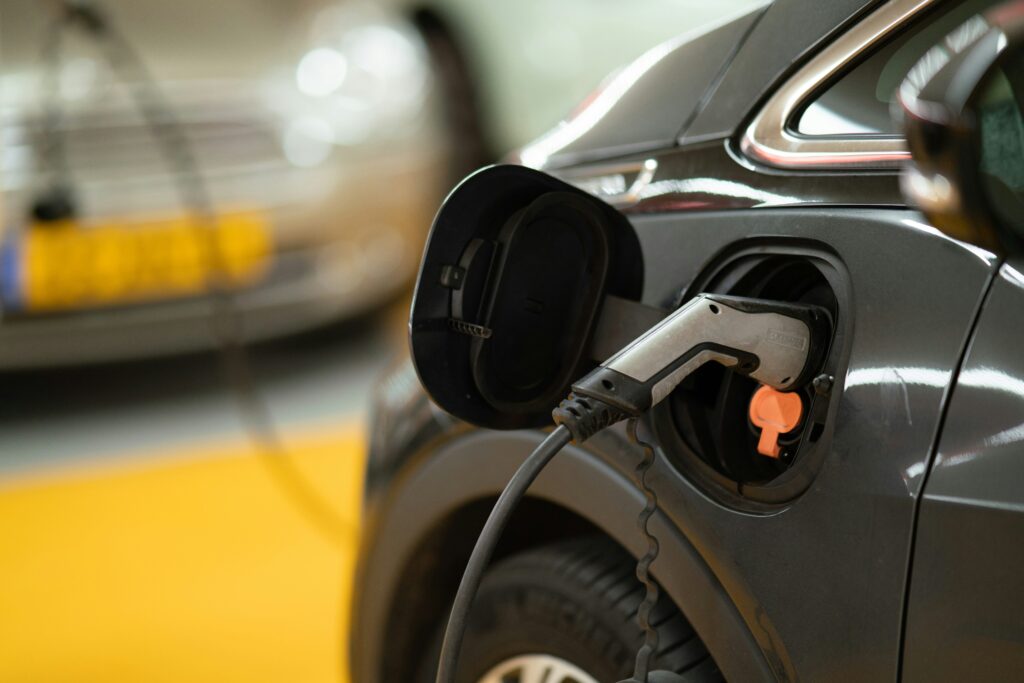
Range Extenders and Alternatives
Introduction to Range Extenders
Range extenders are devices or systems that provide additional power to an electric vehicle, effectively extending its driving range. Range extenders are often used in plug-in hybrid electric vehicles (PHEVs) to supplement the electric motor with an internal combustion engine. These engines generate electricity, either by directly driving a generator or by charging the vehicle’s battery, allowing for extended driving range.
Types of Range Extenders
There are different types of range extenders used in electric vehicles. One common type is a small internal combustion engine fueled by gasoline or diesel, which powers a generator to produce electricity. Another type is a fuel cell range extender, which uses hydrogen fuel cells to generate electricity. Furthermore, there are alternative range extender technologies being explored, such as gas turbines or rotary engines.
Other Alternative Technologies
While range extenders provide a solution to increase the driving range of electric vehicles, other alternative technologies are being explored as well. One such technology is hydrogen fuel cell electric vehicles (FCEVs), which use a hydrogen fuel cell to produce electricity on board, providing a longer range compared to battery electric vehicles. Dynamic wireless charging is another emerging technology that allows electric vehicles to charge wirelessly while in motion, effectively increasing their range.
Hydrogen Fuel Cell Vehicles
Hydrogen fuel cell vehicles (FCEVs) are a type of electric vehicle that use hydrogen gas and a fuel cell stack to generate electricity. FCEVs offer a longer driving range and shorter refueling times compared to battery electric vehicles. However, the infrastructure required to produce, store, and distribute hydrogen is still under development, making FCEVs less common than battery electric vehicles.
Dynamic Wireless Charging
Dynamic wireless charging is an innovative technology that has the potential to revolutionize the range of electric vehicles. It allows for wireless charging of EVs while they are in motion, enabling continuous charging and extended driving range. This technology involves embedding charging pads or cables into the road surface or using overhead charging systems, ensuring that the vehicle remains charged without the need for manual plug-in charging.
Real-World Range vs. Manufacturer Claim
Factors Affecting Real-World Range
While manufacturers provide estimated range figures for their electric vehicles, real-world range can vary due to several factors. Driving conditions, such as speed, acceleration, and elevation changes, can significantly affect the range of an electric vehicle. Additionally, the use of accessories like air conditioning or heating, as well as the weight of passengers and cargo, can impact the overall efficiency and, therefore, the real-world range.
Influence of Driving Style
Driving style plays a crucial role in the actual range achieved by an electric vehicle. Aggressive driving habits, such as quick acceleration and braking or driving at high speeds, can reduce the overall efficiency and drain the battery faster. On the other hand, adopting eco-driving techniques, such as gentle acceleration and maintaining a consistent speed, can help maximize the range of an electric vehicle.
Effect of Temperature
Temperature can also influence the range of electric vehicles. Extreme cold or hot weather conditions can affect the efficiency of the battery and impact overall range. Cold temperatures may reduce the battery’s ability to deliver its full capacity, while hot temperatures may lead to increased energy consumption for cooling systems. EV owners should be aware of these temperature effects and plan accordingly for optimal range.
Testing Standards and Certification
Manufacturers typically conduct range tests under controlled laboratory conditions to determine the estimated range of their electric vehicles. However, these laboratory results may not always accurately reflect real-world driving conditions. Various testing standards and certification processes, such as the EPA’s range estimation method, are in place to provide consumers with a more realistic and standardized measure of an electric vehicle’s range.
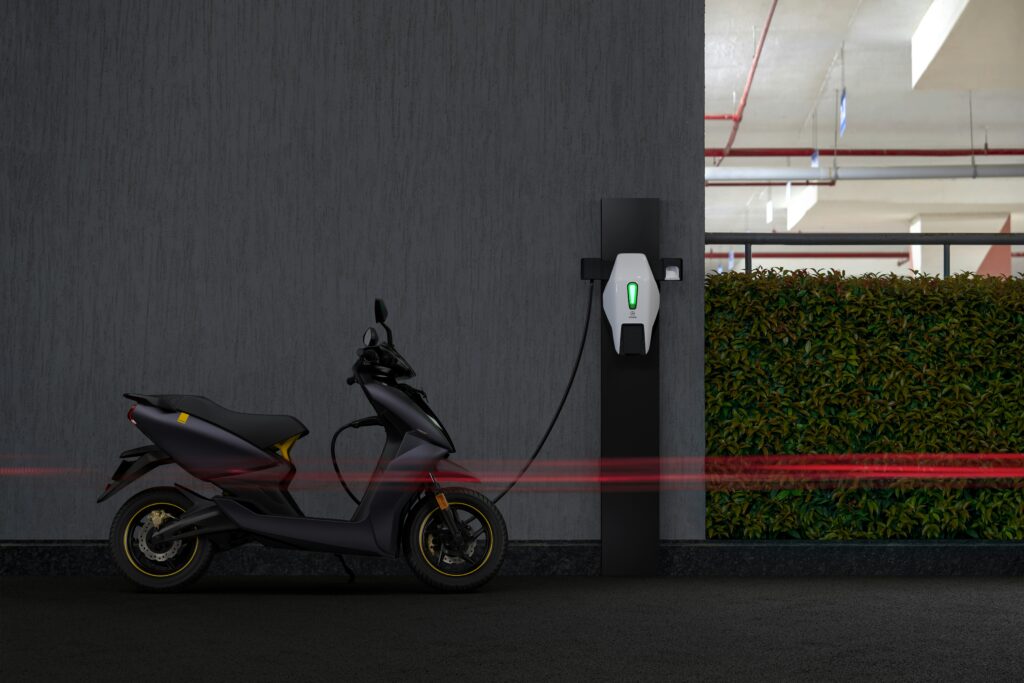
Strategies to Enhance Range
Route Planning and Navigation Systems
Route planning plays a crucial role in maximizing the range of an electric vehicle. Using advanced navigation systems specifically designed for EVs, drivers can choose routes that include charging stations along the way. These systems can provide real-time information about charging station availability, charging times, and even estimated energy consumption, allowing drivers to better plan their trips and minimize range anxiety.
Battery Management Systems
Battery management systems (BMS) monitor and control the performance of electric vehicle batteries. These systems ensure the optimal charging and discharging of the battery, maximizing its lifespan and overall efficiency. Advanced BMS technology can provide accurate range predictions based on factors such as driving conditions, battery health, and energy consumption, helping drivers make informed decisions during their journeys.
Eco-Driving Techniques
Adopting eco-driving techniques can significantly enhance the range of an electric vehicle. Gentle acceleration, maintaining a steady speed, and anticipating traffic conditions can help conserve energy and minimize battery drain. Additionally, avoiding excessive accessory use, such as heaters or air conditioning, when possible can contribute to extending the range of an electric vehicle.
Integration of Renewable Energy Sources
Integrating renewable energy sources, such as solar panels or wind turbines, into the charging infrastructure can enhance the range of electric vehicles. By generating clean electricity directly from renewable sources, the energy used to charge EVs becomes more sustainable and reduces the overall carbon footprint. Additionally, integrating energy storage systems with renewable energy sources allows for better utilization of clean energy and can contribute to a more reliable charging infrastructure.
Long-Distance Travel with Electric Vehicles
Fast Charging Infrastructure
Fast charging infrastructure plays a vital role in enabling long-distance travel with electric vehicles. Fast chargers, also known as DC fast chargers, provide high-power charging capabilities, allowing EV owners to recharge their vehicles quickly during long journeys. These charging stations are often strategically located along highways or in commercial areas, providing convenient access to fast and efficient charging.
Interoperability and Charging Standards
Interoperability and standardization of charging protocols and connectors are essential for ensuring a seamless charging experience while traveling long distances. Standardization allows EV owners to use any charging station, regardless of the manufacturer or network operator. This interoperability simplifies the charging process, eliminates the need for multiple access cards or accounts, and reduces range anxiety, as EV owners can rely on a consistent and widely available charging infrastructure.
Range Confidence and Trip Planning
Range confidence refers to drivers’ trust and assurance in their electric vehicle’s ability to reach their intended destination without running out of charge. Trip planning is essential to build range confidence during long-distance travel. Utilizing advanced trip planning tools and navigation systems specific to EVs, drivers can select routes that include charging stations along the way, ensuring they have sufficient power to complete their journey without concerns about range limitations.
Availability of Charging Stations
The availability of charging stations along major travel routes is crucial for the success of long-distance travel with electric vehicles. To encourage EV adoption and support long-distance travel, governments, companies, and charging infrastructure providers need to invest in expanding the charging network. Increasing the number of charging stations and ensuring their reliability and accessibility will help alleviate range anxiety and enable more EV owners to travel long distances confidently.
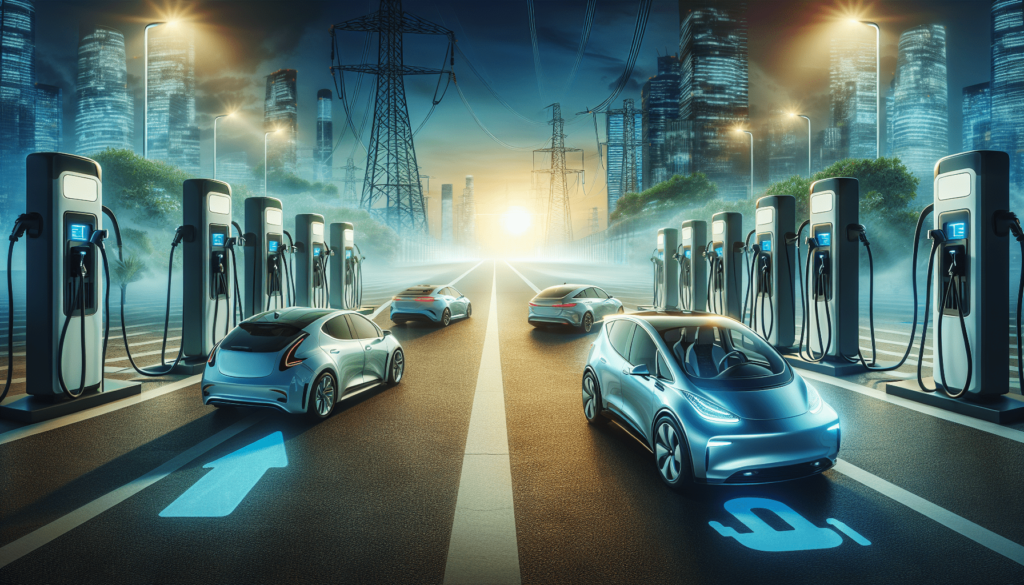
Future of Electric Vehicle Range
Advancements in Battery Technology
The future of electric vehicle range looks promising due to ongoing advancements in battery technology. Research and development efforts are focusing on increasing energy density, improving charging speeds, and extending battery lifespan. Lithium-ion batteries, currently the dominant battery technology used in EVs, are expected to continue improving, providing longer ranges and faster charging times.
Solid-State Batteries
Solid-state batteries are a promising next-generation technology that could revolutionize electric vehicle range. Unlike conventional lithium-ion batteries, solid-state batteries use solid electrolytes instead of liquid electrolytes, offering several advantages such as higher energy density, faster charging, and improved safety. Solid-state batteries have the potential to significantly increase the range of electric vehicles while reducing charging times.
Ultra-Fast Charging
Ultra-fast charging technologies aim to shorten charging times and improve the convenience of electric vehicles. High-power charging stations capable of delivering charging rates of several hundred kilowatts are being developed. With ultra-fast charging, EV owners can recharge their vehicles in a matter of minutes rather than hours, making long-distance travel with electric vehicles more practical and comparable to refueling a traditional vehicle.
Wireless Charging
Wireless charging technology, also known as inductive charging, is being explored as a convenient and hassle-free way to charge electric vehicles. By using electromagnetic fields to transfer energy from a charging pad on the ground to a receiver installed in the electric vehicle, wireless charging eliminates the need for physical cable connections. This technology has the potential to further enhance the range of electric vehicles by offering seamless and effortless charging.
The Impact of Electric Vehicle Range on Market Adoption
The range of electric vehicles plays a significant role in their market adoption and consumer acceptance. As the range improves, it addresses one of the main concerns of potential buyers – range anxiety. Longer ranges allow electric vehicles to compete more closely with traditional vehicles in terms of practicality and convenience, making them a viable option for a broader range of consumers. Increased range, coupled with advancements in charging infrastructure, will continue to fuel the growth of the electric vehicle market.
Conclusion
The evolution of electric vehicle range has come a long way, and it continues to improve at a rapid pace. Advancements in battery technology, such as increasing energy density and reducing charging times, have significantly extended the driving range of electric vehicles. The development of solid-state batteries and ultra-fast charging technology holds the promise of even greater range improvements in the future.
The importance of range cannot be overstated when it comes to electric vehicles. A longer range addresses the concerns of range anxiety and enables long-distance travel, making electric vehicles a viable option for a wider range of consumers. The availability of a reliable and extensive charging infrastructure, coupled with strategies to enhance range efficiency, further boosts the appeal and practicality of electric vehicles.
As the electric vehicle market continues to grow and mature, the future outlook is promising. The ongoing advancements and innovations in battery technology, charging infrastructure, and range-enhancing strategies contribute to the gradual transition towards a sustainable and zero-emission transportation future. Electric vehicles are no longer just a concept; they are becoming a mainstream mode of transportation, and their range will only continue to improve as technology progresses.
